Tired of long paint jobs? Vinyl wrapping delivers stunning results in far less time. Discover key factors affecting installation timelines. Learn how to plan your car transformation efficiently. Ready to create a mobile masterpiece? Start your journey here!
Factors that Affect How Long It Takes to Wrap a Car
For most car enthusiasts, the time it takes to wrap a car is often overlooked in the excitement of giving their ride a new look. But when it’s for commercial use or the only vehicle available, every second counts. Several factors determine how long a vinyl wrap installation takes.
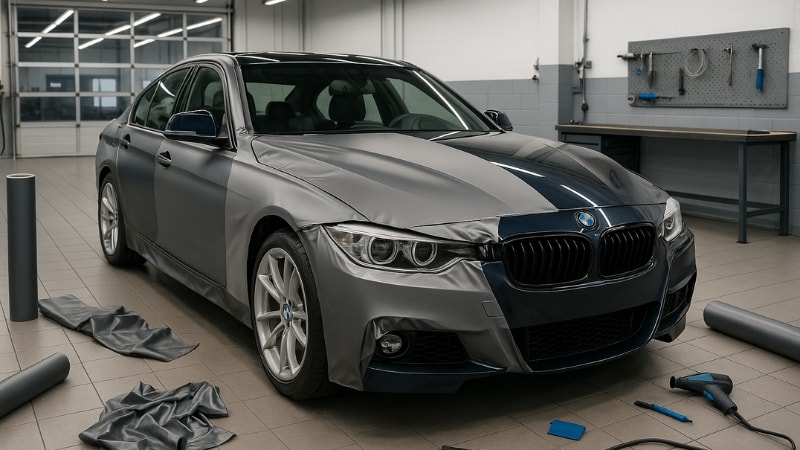
Vehicle Size & Model
The most obvious factor that adds to the time of wrapping a car is its size, as a larger vehicle naturally takes more preparation time and has a larger area to cover. Wrapping a gigantic bus can never be similar to wrapping a compact car.
Similarly, the vehicle’s model also plays a key role. Wrapping cars like a Lamborghini Aventador, Audi, or Mustang takes more time, as their curves and contours require extra attention to perfectly cover every nook and cranny.
| Car Model | Car Category | Estimated Time |
|---|---|---|
| Tesla Model Y | Hybrid SUV | 10 Hours |
| Toyota RAV4 | Compact SUV | 9 - 13 Hours |
| BMW 3 Series | Luxury Sedan | 8-12 Hours |
| Mercedes Benz | Luxury SUV | 14-20 Hours |
| Toyota Camry | Mid-Size Sedan | 8 Hours |
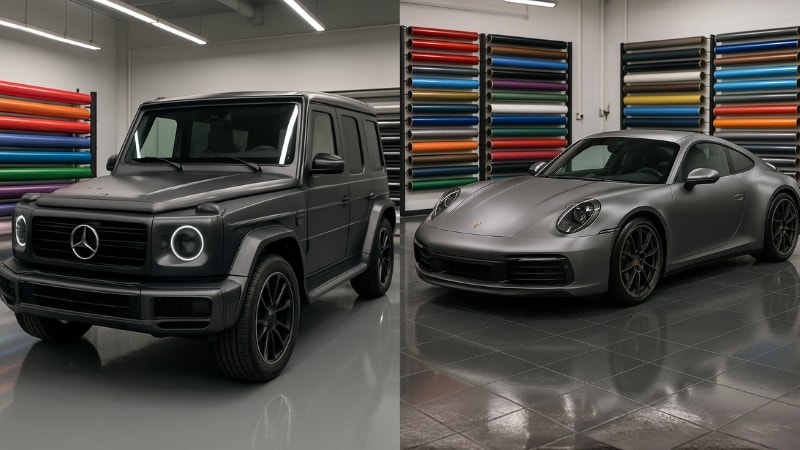
Wrapping Style
It doesn’t take a genius to know that the partial wrap can be performed in a few hours because the partial wrap design only covers certain portions. In contrast, a full wrap requires encompassing the entire vehicle, which is effort-intensive and hence demands more time.
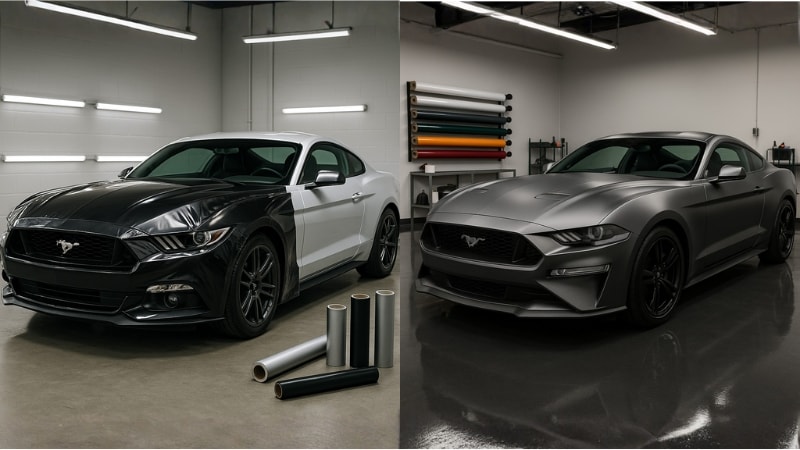
Design Complexity
Vinyl films that feature custom design demand careful installation while making sure every line aligns correctly so that the intricate details remain accentuated. For example, an anime wrap needs more attention to detail during application than a plain purple or blue wrap.
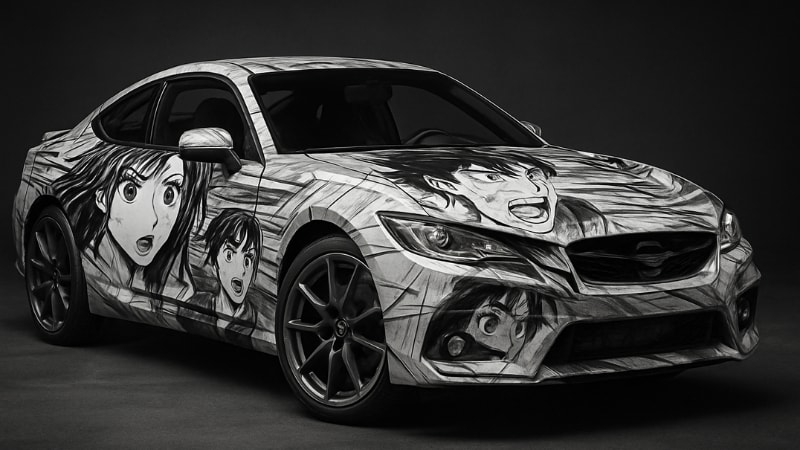
Vinyl Quality
The quality of vinyl film bears a relation to the ease of installation, which ultimately affects how much time the wrapping process takes. Premium cast films get installed smoothly as they conform to the shape of the vehicle easily and hence, install faster and also last longer.
Surface Condition
The condition of your vehicle’s surface dictates the time required first to prepare it and then wrap it with vinyl film. So, if your vehicle has its paint coming off or its surface has gone rough, expect more time to get it wrapped.
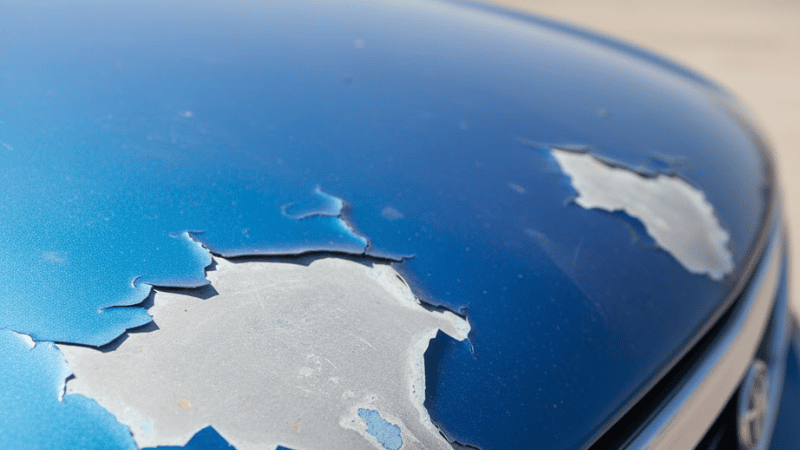
Installer Experience
A professional installer who knows all the tricks and has a grip on the process can easily pull off vinyl wrapping in less time. A professional with certificates and experience has no comparison with just a good installer who only does the job.
The Car Wrapping Process Explained Step-by-Step
The exact estimation of time required for vinyl wrapping is impossible to provide because so many factors influence the time frame. However, you can have an idea by understanding how long it takes to wrap a car.
Here’s the breakdown of the entire process for better clarity and transparency:
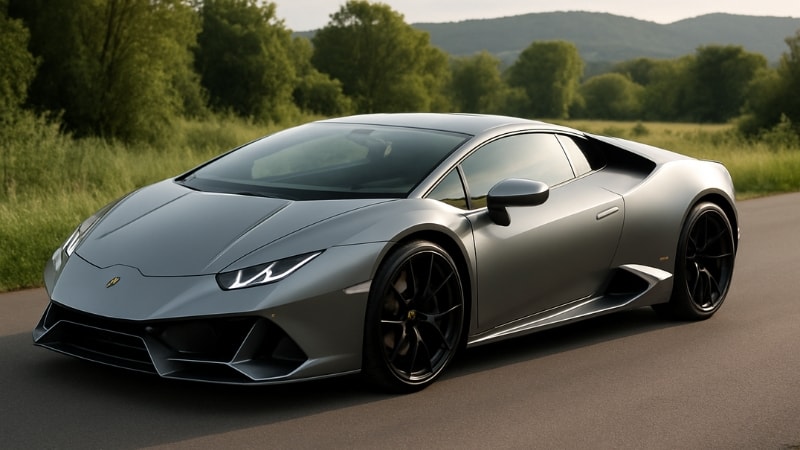
Step One – Consultation & Design Finalization: First comes the decision-making step, when you have to finalize the color, finish, and quality of the wrap. For a customized wrap design, time goes into deciding the design and getting it printed.
This step usually takes the longest because you may be analyzing the market and choosing a suitable vendor.
Step Two – Surface Prep & Cleaning: Now that you have your desired vinyl film at hand, it’s time for the prerequisite to wrapping: surface preparation. The car has to be inspected in detail for any dents or paint erosion.
Then, the surface has to be washed thoroughly to remove all the residues of dust, gunk, or wax, and make the surface squeaky clean to gain maximum adhesion.
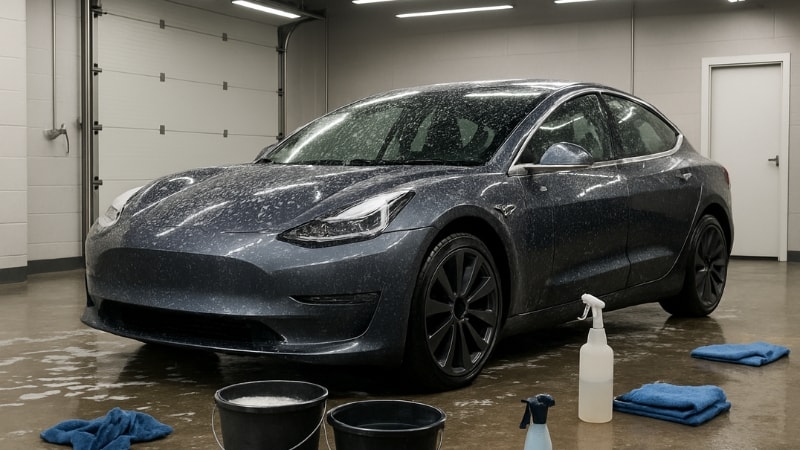
Step Three – Disassembly (Optional): After cleaning, you finally start with the vinyl application. In this step, you may or may not disassemble the entire car parts, including mirrors, lights, and doors, to achieve cleaner edges and for easy installation.
However, this step is optional, and if you think you can work your way around without dismantling, totally go for it.
Step Four – Vinyl Application: Now comes the main step, vinyl application. This step itself is performed in different sub-steps, in which, first of all, the wrap is carefully aligned with the part it will be applied to.
Next, the wrap is cut, leaving a few extra inches on each side. The cut piece is then stretched over the panel and heat-set using a heat gun.

Step Five – Detail Trimming & Curing: Once the application of the complete vehicle wrap is done, the extra edges are cut with the razor to achieve a seamless appearance. The ends are tacked down and strongly cured with heating.
You can also get window tinting done to complete the entire look.
Step Six – Final Inspection: In the final step, a thorough quality assessment is performed to ascertain that there are no errors or missed edges. If there is any bubble formation, it is catered with the heat gun so that the wrap’s finish remains smooth.

Average time
On average, it can take around 2-5 days to pull off a vinyl wrap application, starting from the day you step into the market to buy vinyl wrap to the day the wrapped vehicle is delivered. This time frame can vary depending upon several factors that are aforementioned.
How Long Does It Take to Wrap Different Parts of a Car?
If we further break down the total time into the time taken for different wrap styles, you can get a clearer idea of the overall duration. Here’s a brief explanation of the time required for different wrap styles and types.
Full Wrap
A full wrap includes complete wrapping of the vehicles, including all the parts. Apart from the main body, it also includes hood wrap, bumper wrap, door handle wrap, and other parts. This wrap type requires the most time because even measuring how much vinyl film is required takes a lot of time.
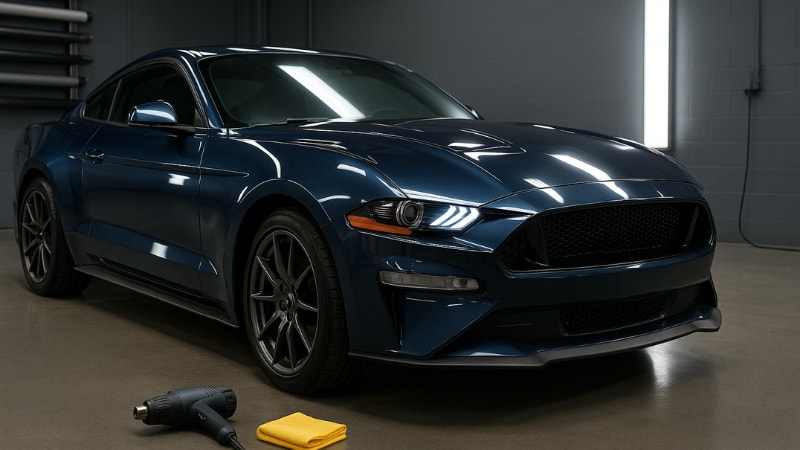
Partial Wrap
As the name suggests, partial wrap features covering only a specific part of the vehicle with the car wrap. It’s often chosen for aesthetic purposes, such as adding decals or covering a particular area that’s been damaged.
Sometimes, the owner may want to change the look of one section, like the sunroof.
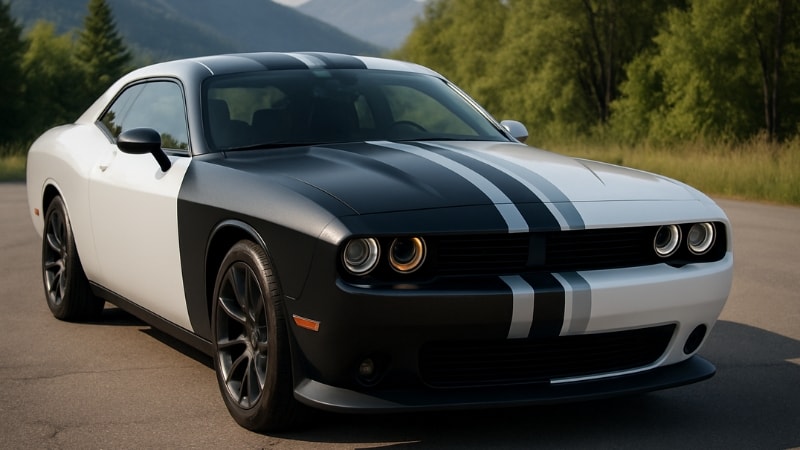
Custom Graphics Wrap
Unlike wraps with plain finishes, like metallic wraps or matte wraps, custom design wraps have intricate details that call for precise application. Every line or design element on each panel has to be aligned carefully so that the final design comes off perfect, thus requiring more time.
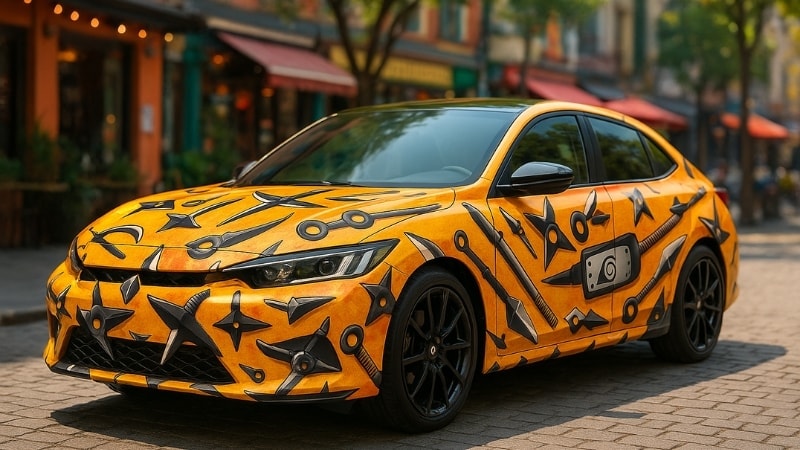
DIY Wrap
The time required for a DIY application is purely subjective and depends on how much time you’re willing to invest. You might need to redo certain sections, and some parts may take longer than expected. As a result, personal projects like these can take anywhere from 5 to 10 days to complete.
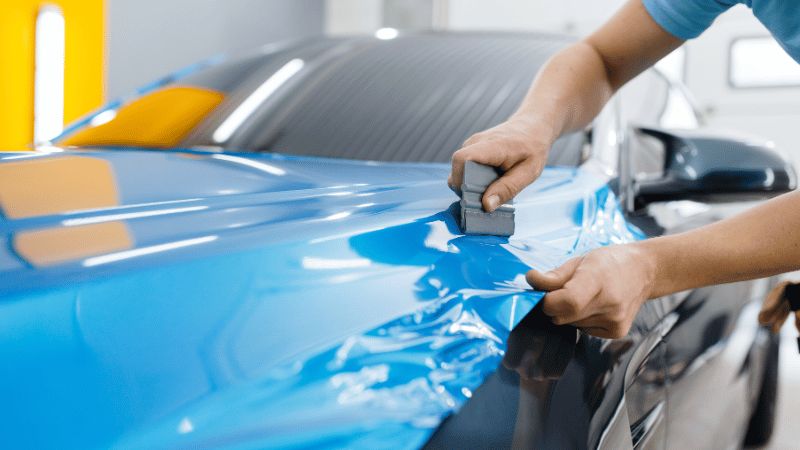
Here’s a quick breakdown of how long different types of car wraps usually take, along with their common uses.
| Wrap Type | Time Required | Typical Use | Notes |
|---|---|---|---|
| Full Wrap | 3–5 days | Full color change, commercial branding | Includes doors, bumpers, mirrors |
| Partial Wrap | 1–2 days | Hood, roof, side panels | Ideal for accents or budget jobs |
| Custom Graphics Wrap | 3–6 days | Advertising wraps | Requires design alignment |
| DIY Wrap | 5–10 days | Small cars, personal projects | Slower, risk of bubbles or misalignment |
Professional vs DIY Wrapping: Time, Quality, & Risks
You may have decent skills in the area of vinyl wrapping, yet the final finish of a DIY project can never match that of professional installation. Still, through our head-to-head comparison of both, you can assess your non-negotiables and decide what suits you the best.
Professional Installation
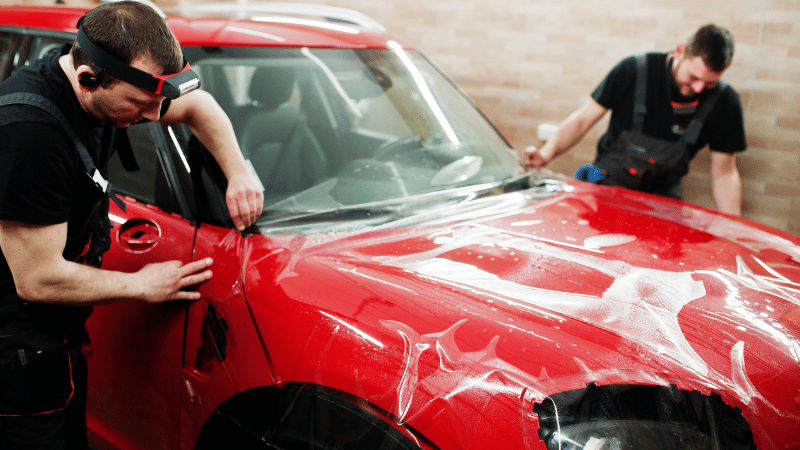
A professional installer performs the process in a climate-controlled environment with optimal temperature ranging between 15° C to 25° C. Any fluctuation outside this range affects the adhesion properties of vinyl and the curing time.
A professional wrap installation is typically completed within 2–4 days and often comes with the added benefit of warranty coverage.
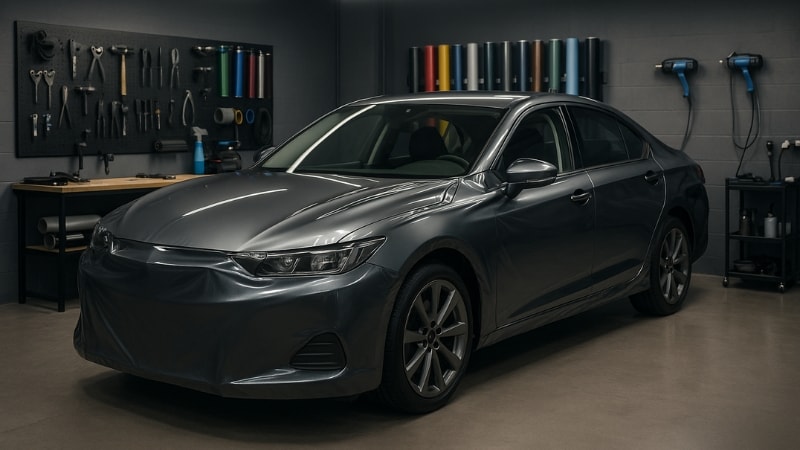
DIY Wrapping
A DIY (do-it-yourself) project can bring car enthusiasts the satisfaction of revamping their vehicle themselves, but it also takes 3x longer. Moreover, issues like poor alignment and bubble formation can occur, ultimately defeating the purpose of the makeover if errors remain visible.
While the overall cost of wrapping may be lower, it often comes at the expense of a sleek finish.

Here’s a quick comparison between a DIY wrap project and professional installation to help you understand how they differ in time, quality, and results.
| Characterisits | DIY Project | Professional Installation |
|---|---|---|
| Time | Upto 10 Days | Within 4 Days |
| Finish Quality | Mediocre | Premium |
| Best for | Small areas like mirrors and bumpers | Full wrap or custom design |
| Risks | Bubbling, peeling, and lifting | May exceed the budget, but remarkable results |
Post-Wrap Curing Time & Maintenance
The time taken to wrap a car doesn’t end the moment you apply the last vinyl panel on your car. In fact, the post-wrap time also has to be included. The time of curing post-wrap depends on ambient temperature and humidity.
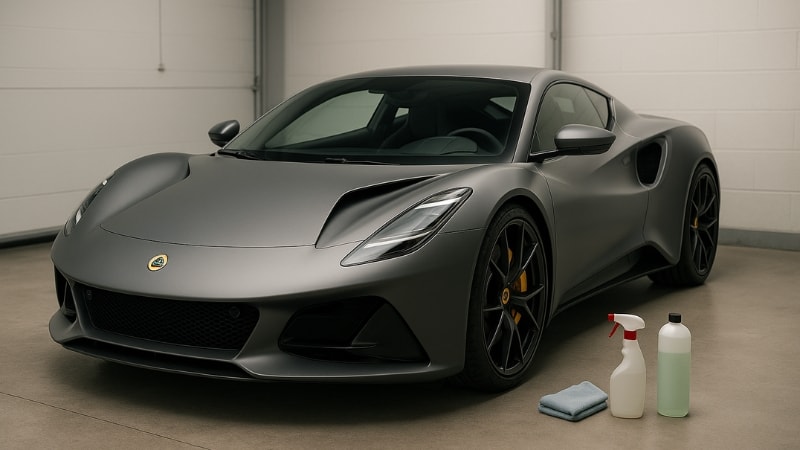
Higher temperature facilitates the curing; however, too high a temperature can cause the adhesive to harden. Similarly, higher humidity slows down the curing because humidity increases the moisture.
After Installation Care:
Here’s what you need to do to a newly wrapped car: make sure the final quality stays mint.
- Allow 12–24 hours of indoor curing before driving.
- Avoid washing for 5–7 days.
- Inspect edges regularly to prevent lifting.
- Use pH-neutral soap for cleaning.
Conclusion
So, you might be concerned about the time it takes to wrap a car with vinyl film. However, it’s important to know that revamping a vehicle through wrapping requires significantly less time than a full paint job.
When comparing paint and wrap, the latter offers far more advantages. So, what are you waiting for? Get started on your car wrap project today!
Offer Your Customers with Carlike’s Premium Vinyl Wraps
Carlike considers our customers a part of us and bring only the best for them. Our low MOQ allows new businesses to start with as low as 10 rolls. We ship our products promptly so that you don’t have to wait for too long and lose customers.
So, want to stock up your inventory with the best vinyl wrapping films and provide your customers with the best. Contact us, and a person from our 24/7 active support will cater to your queries.
FAQs
Q1: How long does a full car wrap take to complete?
A full wrap can take upto 3 to 5 days; however, timeframes still vary based upon different factors.
Q2: Can I wash my car immediately after getting it wrapped?
No, washing your car immediately right after getting it wrapped will undo all the efforts that have been invested. However, after some time has passed, you can wash your new wrapped vehicle.
Q3: How long does the wrap last once installed?
On average, the lifespan of installed wrap varies between 5 to 7 years, depending on various factors. This timeframe can also increase or decrease depending on the care you provide to your four-sheeler.
Q4: Will my car paint be safe after wrapping?
Absolutely, in fact, that is one of the very purposes of vinyl wrapping. It acts as a barrier between the harsh external environment and your car’s paint and hence, protects it from deteriorating.



